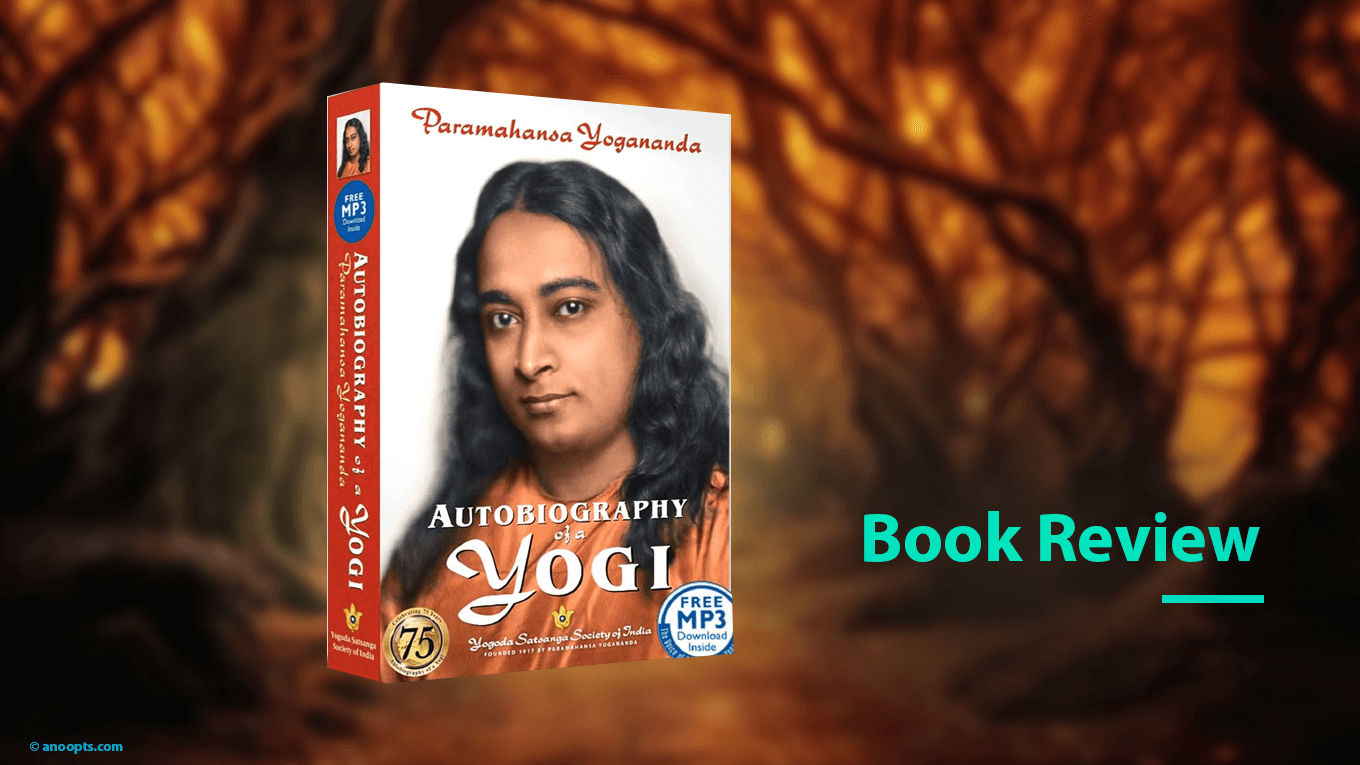Journey to the Infinite: Unveiling Spiritual Truths in ‘Autobiography of a Yogi’

Autobiography of a Yogi by Paramhansa Yogananda is a landmark text in the genre of spiritual autobiographies. First published in 1946, it has since become a spiritual classic, translated into multiple languages and inspiring countless individuals on their spiritual journeys. Yogananda, a prominent yogi and spiritual teacher, narrates his life story and his spiritual quest, providing a profound insight into the world of Indian spirituality, yogic practices, and the timeless wisdom of the East. This review delves into the key themes, personal reflections, and the broader impact of this seminal work.
Early Life and Spiritual Inclinations
Yogananda’s early life, as described in the book, is marked by a deep spiritual inclination from a young age. Born Mukunda Lal Ghosh in Gorakhpur, India, he recounts his childhood experiences, his family’s influence, and his early encounters with spirituality. His descriptions are vivid, capturing the cultural and familial environment that shaped his early years. Yogananda’s family, particularly his mother, played a significant role in nurturing his spiritual curiosity. The death of his mother and the mystical experience of receiving an amulet from her in a vision are pivotal moments that underscore the depth of his spiritual sensitivity even as a child.
Meeting with Spiritual Teachers
One of the most compelling aspects of Autobiography of a Yogi is Yogananda’s encounters with various spiritual teachers and saints. These interactions provide a rich tapestry of spiritual wisdom and mystical experiences. The book introduces readers to a range of spiritual figures, each with unique teachings and miraculous abilities. Among them, his meeting with Swami Pranabananda, known as the “Saint with Two Bodies,” stands out. This encounter, where Yogananda witnesses the saint’s ability to appear in two places simultaneously, serves as a testament to the extraordinary potential of spiritual development.
Yogananda’s relationship with his guru, Sri Yukteswar, is central to the narrative. The profound bond between guru and disciple is beautifully portrayed, highlighting the importance of guidance and mentorship in spiritual growth. Sri Yukteswar’s wisdom, discipline, and loving guidance profoundly impact Yogananda, shaping his spiritual path and preparing him for his future role as a spiritual teacher.
Spiritual Practices and Philosophies
The book offers an in-depth look at various spiritual practices and philosophies, particularly Kriya Yoga, which Yogananda champions as a powerful tool for spiritual advancement. Kriya Yoga, a meditative practice aimed at accelerating spiritual growth, is presented not merely as a technique but as a comprehensive path to self-realization. Yogananda explains its principles, benefits, and the transformative impact it had on his life and the lives of his students.
In addition to Kriya Yoga, Yogananda discusses broader yogic philosophies and the underlying principles of Hindu spirituality. His explanations are accessible, making complex concepts comprehensible to readers unfamiliar with Eastern spiritual traditions. The emphasis on direct personal experience and the inner transformation that follows rigorous spiritual practice is a recurring theme throughout the book.
Travels and Establishing the Self-Realization Fellowship
Yogananda’s travels, both within India and later to the West, form an exciting part of the autobiography. His journey to America in 1920 to attend the International Congress of Religious Liberals in Boston marks a significant turning point. This trip not only broadens his horizons but also sets the stage for his lifelong mission of disseminating Eastern spiritual knowledge in the West.
The establishment of the Self-Realization Fellowship (SRF) in Los Angeles is a landmark achievement in Yogananda’s life. The SRF becomes the primary vehicle for his teachings, promoting a harmonious blend of Eastern and Western spiritual traditions. Yogananda’s efforts to adapt and present yogic teachings in a way that resonates with Western audiences reflect his deep understanding of cultural differences and his commitment to making spirituality accessible to all.
Encounters with Influential Figures
Throughout his life, Yogananda met several influential figures from various walks of life. His interactions with renowned personalities like Mahatma Gandhi, Rabindranath Tagore, and the American horticulturist Luther Burbank are fascinating highlights. These encounters illustrate the universality of spiritual truths and the mutual respect between great minds dedicated to the betterment of humanity.
Yogananda’s visit to Therese Neumann, the Catholic stigmatist of Bavaria, is another remarkable episode. Witnessing her miraculous ability to subsist without food and displaying stigmata reinforces Yogananda’s belief in the interconnectedness of all true spiritual paths, regardless of religious labels.
Mystical Experiences and Miracles
Autobiography of a Yogi is replete with accounts of mystical experiences and miracles, which serve to illustrate the extraordinary potential inherent in the human spirit. From levitating saints to materializing objects, these stories, while astounding, are presented with a sense of humility and reverence. Yogananda’s own experiences of cosmic consciousness, where he perceives the unity of all creation, offer profound insights into the ultimate goal of spiritual practice.
The book does not shy away from discussing the supernatural elements of spiritual life. However, Yogananda emphasizes that these phenomena are mere by-products of a deeper spiritual journey aimed at realizing one’s true nature. The miraculous is woven into the narrative not as a spectacle but as a natural outcome of a life dedicated to spiritual discipline and divine love.
Reflections on Death and the Afterlife
Yogananda’s reflections on death and the afterlife are particularly poignant. The resurrection of his guru, Sri Yukteswar, who appears to him after his physical death, provides profound insights into the continuity of life beyond the physical realm. This experience, along with Yogananda’s detailed descriptions of the astral and causal worlds, offers a comforting perspective on death and the eternal nature of the soul.
These reflections are not just theoretical musings but are grounded in Yogananda’s direct experiences and the teachings of his lineage. They provide a sense of hope and assurance, emphasizing the importance of living a spiritually centered life to prepare for the inevitable transition beyond physical existence.
Legacy and Impact
The legacy of Autobiography of a Yogi is immense. The book has inspired countless individuals, including prominent figures in various fields. Its impact on the spiritual landscape of the West is significant, contributing to a greater understanding and appreciation of Eastern spiritual traditions. Yogananda’s teachings continue to resonate, offering timeless wisdom and practical guidance for those seeking spiritual fulfillment.
The enduring popularity of the book is a testament to its universal appeal. It transcends religious and cultural boundaries, speaking to the innate human longing for truth, love, and a deeper connection with the divine. Yogananda’s vision of a world united by spiritual principles remains as relevant today as it was when he first penned his autobiography.
Conclusion
Autobiography of a Yogi is more than just a personal memoir; it is a spiritual odyssey that invites readers to explore the depths of their own consciousness. Paramhansa Yogananda’s life story is a beacon of inspiration, illuminating the path for those who seek a higher purpose. Through his narrative, he shares timeless truths, practical wisdom, and the transformative power of divine love. This book is a treasure trove for anyone interested in the spiritual heritage of India, the practice of yoga, and the pursuit of self-realization.
In essence, Autobiography of a Yogi is a testament to the enduring power of the human spirit and the boundless possibilities that lie within each of us. It encourages readers to embark on their own journey of self-discovery, guided by the light of inner wisdom and the teachings of enlightened masters.

